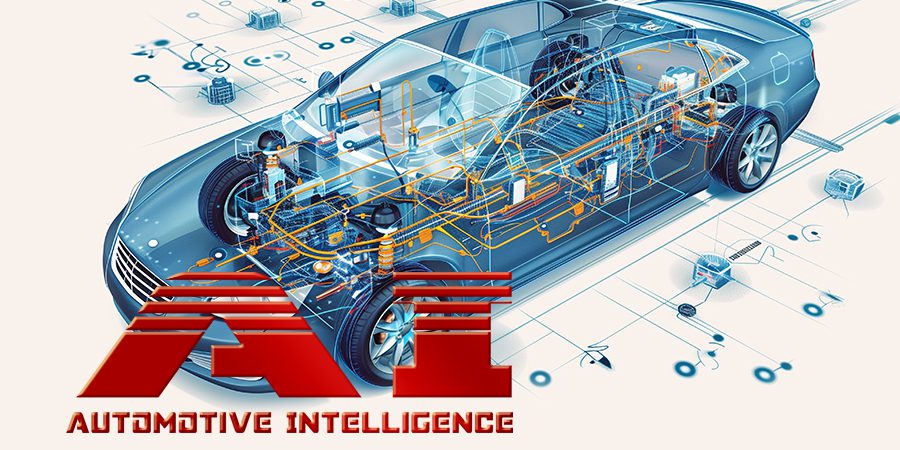Many changes have taken place with transmission cooling since its inception. It started with a cast iron beast with only a torque converter with fins to a simple pair of lines that carried fluid to a liquid cooler inside the radiator. As technology and engineering have progressed, the way transmission cooling systems were designed has changed, too. Fluid flow is essential to transmission operation; regulating fluid temperature is necessary to achieve consistent fluid viscosity to obtain the desired shift feel.
The cooling system many of us have seen was an open-loop design. Fluid is pumped into the torque converter, heated, and directed outside the transmission to a cooler. The heat is transferred there to either air, engine coolant, or both, depending on the design. The reduced temperature fluid is brought back into the transmission and distributed through the lube passages to lubricate and cool the gears, clutches, and shafts. The fluid may take a long time to reach optimum temperature, depending on the driving conditions. In my time in Alaska, driving 10-12 miles to reach 180°F on a 4L60E in the summer was not uncommon. It’s worse on those days when it was well below freezing. And since adaptive learning didn’t start until the transmission temperature was around 175°F, you may never reach that point on a short errand.
The transmission shifting could be sluggish or have a slide bump as long as the fluid remained cold. In the pre-computerized days, these problems were addressed with temperature-sensitive springs or thermal elements that varied the fluid volume to feed a clutch. It helped, but it was still far from perfect. Computer controls further assisted in controlling the change in temperature from cold to hot, but it still had its limits.
FLUID WARMER
If we heat the fluid quicker, there would be fewer inconsistent shifts during that warm-up period, thus the Transmission Fluid Warmer. As the engine reaches operating temperature faster, the transmission will as well. Using the engine coolant is a free source of heat. The advantage of the fluid warmer over the traditional in-radiator cooler is this warm-up period. As the coolant flowing through the fluid warmer is directly off the engine, it reaches operating temperature quicker than with only a traditional in-radiator cooler.
WHAT ABOUT COOLING?
Something about names conjures beliefs on how something works, and the fluid warmer is no exception. While it does assist in warming the transmission fluid, it also functions as a cooler. Once the engine and transmission are up to operating temperature, the fluid warmer functions similarly to the in-radiator cooler. Under most applications, this will be sufficient to maintain transmission temperature.  An oil-to-air cooler can be added in cases of more severe use, such as towing and hauling. In some cases, the flow of the external oil to the air cooler can be regulated by using an electronically controlled cooler bypass valve.
An oil-to-air cooler can be added in cases of more severe use, such as towing and hauling. In some cases, the flow of the external oil to the air cooler can be regulated by using an electronically controlled cooler bypass valve.
8F35
The 8F35 utilizes a fluid warmer with an electrically controlled valve that either opens or restricts coolant to the fluid warmer assembly. An external cooler is added to the circuit on Transit Connect vans or models with a towing option. The Transmission fluid warmer coolant control valve controls engine coolant flow to the warmer. By utilizing this control valve, the requirement for a thermal element controlling cooler flow is no longer needed. And since the computer controls it, it can regulate temperature with greater precision. A thermostatically controlled valve regulates fluid through the external cooler for those models with the external cooler (Figure 1).
10R60/10R80
Like the 8F35, the 10R80 also uses a fluid warmer. Some engine and towing configurations also use an external cooler.  The coolant system utilizes the same control devices but in a different mounting configuration. On some models, the warmer is ahead of the transmission pan. On others, it’s mounted on the left inner frame rail, and another configuration has the warmer mounted to the cross member ahead of the engine. This last configuration permits the use of an external cooler, and having the warmer and cooler in close proximity simplifies the routing of the coolant and fluid tubing (Figure 2).
The coolant system utilizes the same control devices but in a different mounting configuration. On some models, the warmer is ahead of the transmission pan. On others, it’s mounted on the left inner frame rail, and another configuration has the warmer mounted to the cross member ahead of the engine. This last configuration permits the use of an external cooler, and having the warmer and cooler in close proximity simplifies the routing of the coolant and fluid tubing (Figure 2).
10R140
Not to be left out, the big 10-speed also uses a fluid warmer system, albeit a much simpler system. The heavy-duty system is flushing a thermostat engine coolant control valve to regulate engine coolant flow into the warmer.
SERVICING THE 8 & 10-SPEED COOLING SYSTEM
With any cooling system, when major repairs are performed requiring transmission removal, the transmission cooling system should be inspected and flushed. On fluid warmer-only systems, this is like any other cooler system flush: connect your flusher to the cooler lines detached from the transmission and turn the machine on, reversing the flow direction to back flush midway through the flushing process. Inspection of the coolant should also be done to ensure it is not scaling, rusting, or restricted with sludge.
 With a vehicle with both the fluid warmer and external oil to air cooler, flushing requires an extra step. First, flush the fluid warmer as described above. Next, locate the cooler lines coming from the bypass valve. Disconnect the hoses from the valve and connect your flusher to the lines leading to and from the external cooler (Figure 3). Again, reverse direction to back flush midway through the process.
With a vehicle with both the fluid warmer and external oil to air cooler, flushing requires an extra step. First, flush the fluid warmer as described above. Next, locate the cooler lines coming from the bypass valve. Disconnect the hoses from the valve and connect your flusher to the lines leading to and from the external cooler (Figure 3). Again, reverse direction to back flush midway through the process.
When filling the transmission on models with the external cooler, it is important to make sure that the fluid level gets checked after the thermostatically controlled cooler valve has opened and the external cooler has flow present.
IDENTIFYING COOLING OVERHEATING CONCERNS
As with any oil-to-water cooler, the coolant must be inspected to ensure it is in a serviceable condition, noting if debris, scaling, or sludge is present. Should someone have mixed coolant types, the result is a gel-like sludge that will block or restrict coolant flow.
Next is the Transmission Fluid Warmer Coolant Control Valve. That’s quite a mouthful, so we’ll refer to it as the coolant control valve for this article. Transmission overheating can result if a failure occurs with the coolant control valve, either electrically or mechanically. The best way to check if this valve is functioning is to get the engine to operating temperature. Use your non-contact IR thermometer and measure the temperature of the line 4-6” before the valve and 4-6” after the valve. If it’s opened and flow is present, the two readings will be the same or very close. If the valve is closed, there will be a significant drop in temperature on the line from the coolant control valve to the fluid warmer.
The same temperature check can be performed on models with an external cooler by measuring the difference between the lines to and from the external cooler. One concern that is becoming more frequent is the rubber line deteriorating internally, causing bits of hose to flex and interrupt the fluid flow. These can act like one-way valves, allowing flow from one direction and blocking it from the other. This can be noticed during flushing when we note the flow rate in both directions.
Prior to performing any work on the vehicle, a complete scan of all modules should be done, paying attention to any engine coolant or overheating-related codes. Cylinder head temperature codes, engine overheating, or thermostat rationality codes may be caused by low coolant or an improperly purged coolant system. Many of these systems can be difficult to fill and purge after a prior repair for a thermostat, water pump, or leaking fitting. Transmission overheating could occur after an engine repair that requires coolant refill and purge.
This article covered the current 8 and 10-speed Ford transmission cooling systems, but many other manufacturers’ transmission cooling systems are working in a similar fashion, especially when it comes to cooler flushing. These systems are more complex than they used to be, but the result is better control of transmission operation, shift feel, and longevity.
















